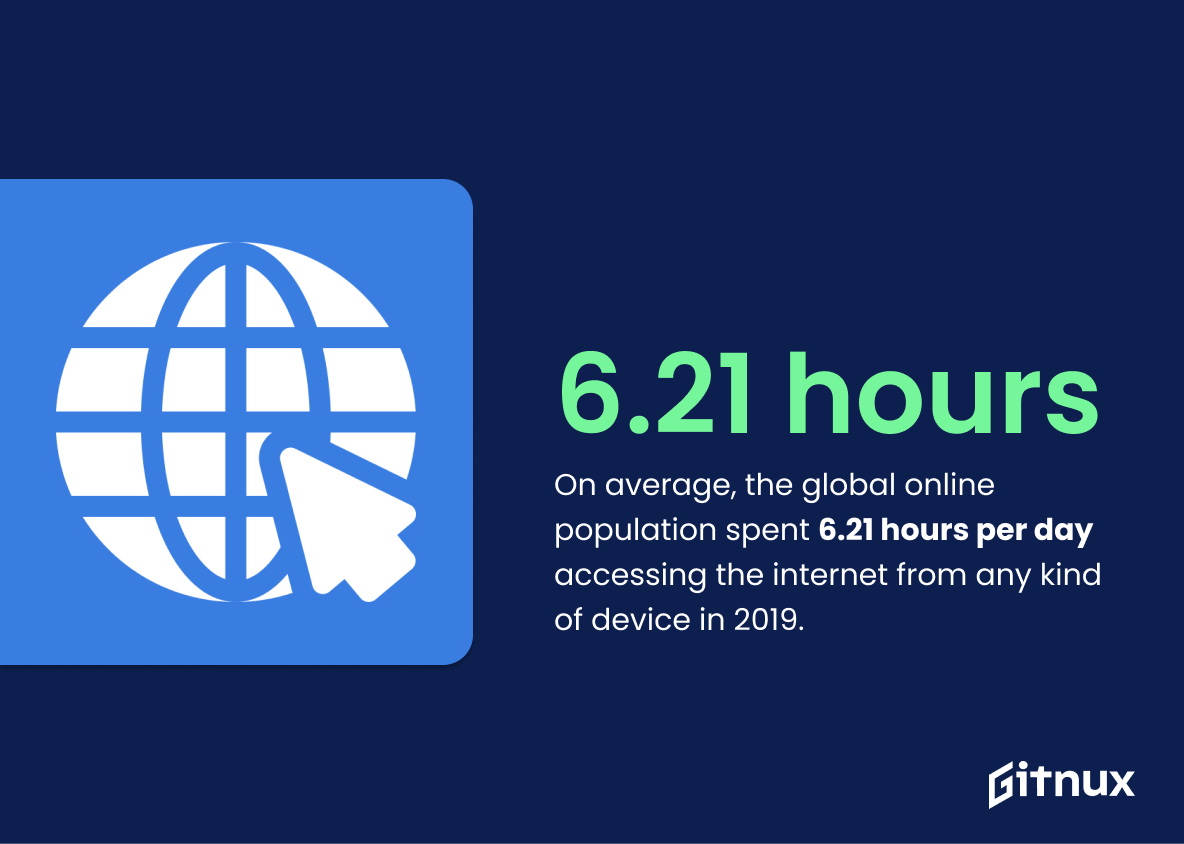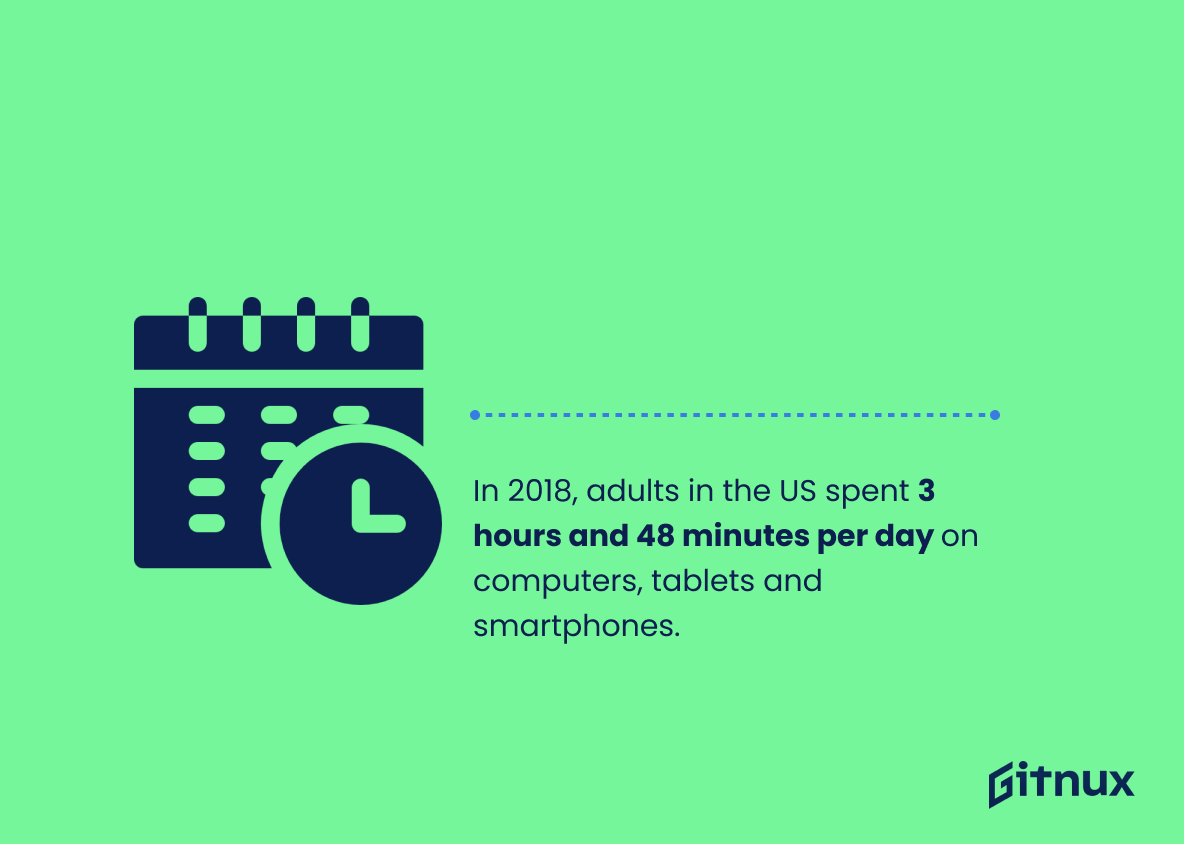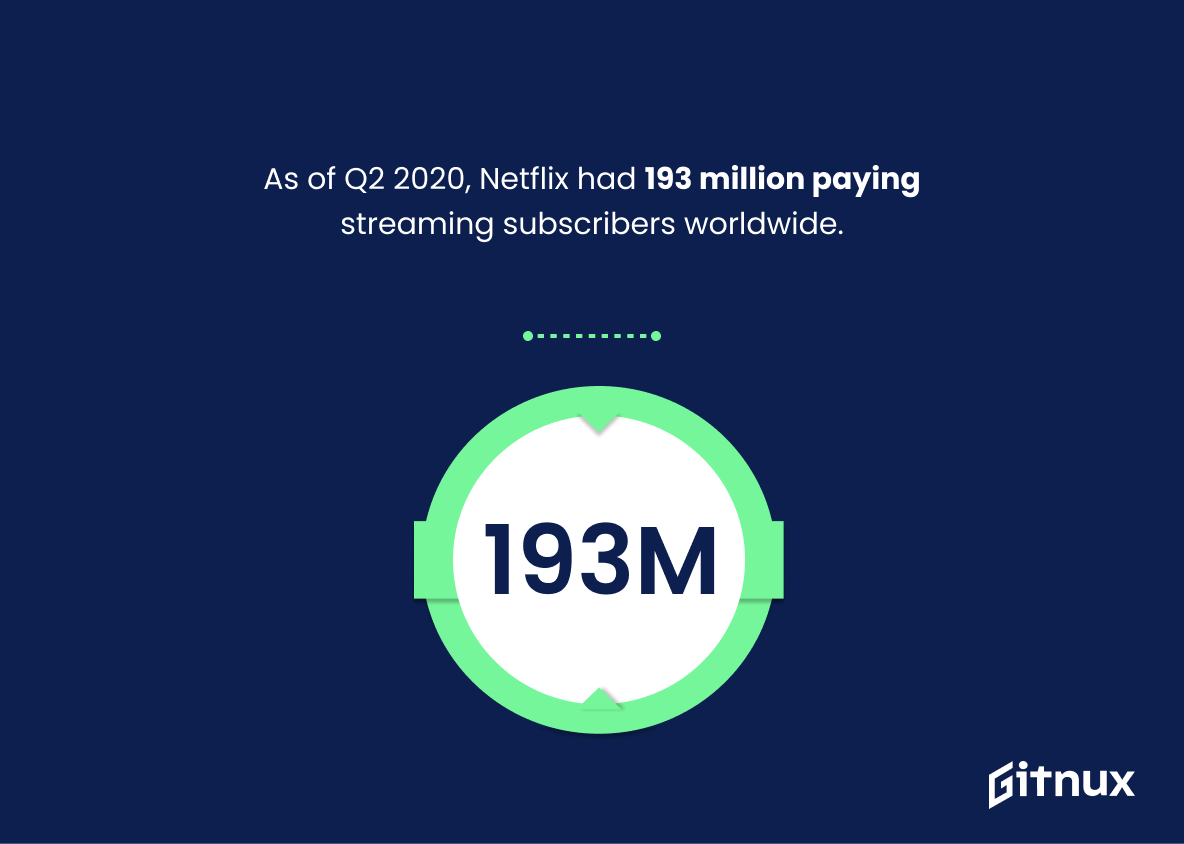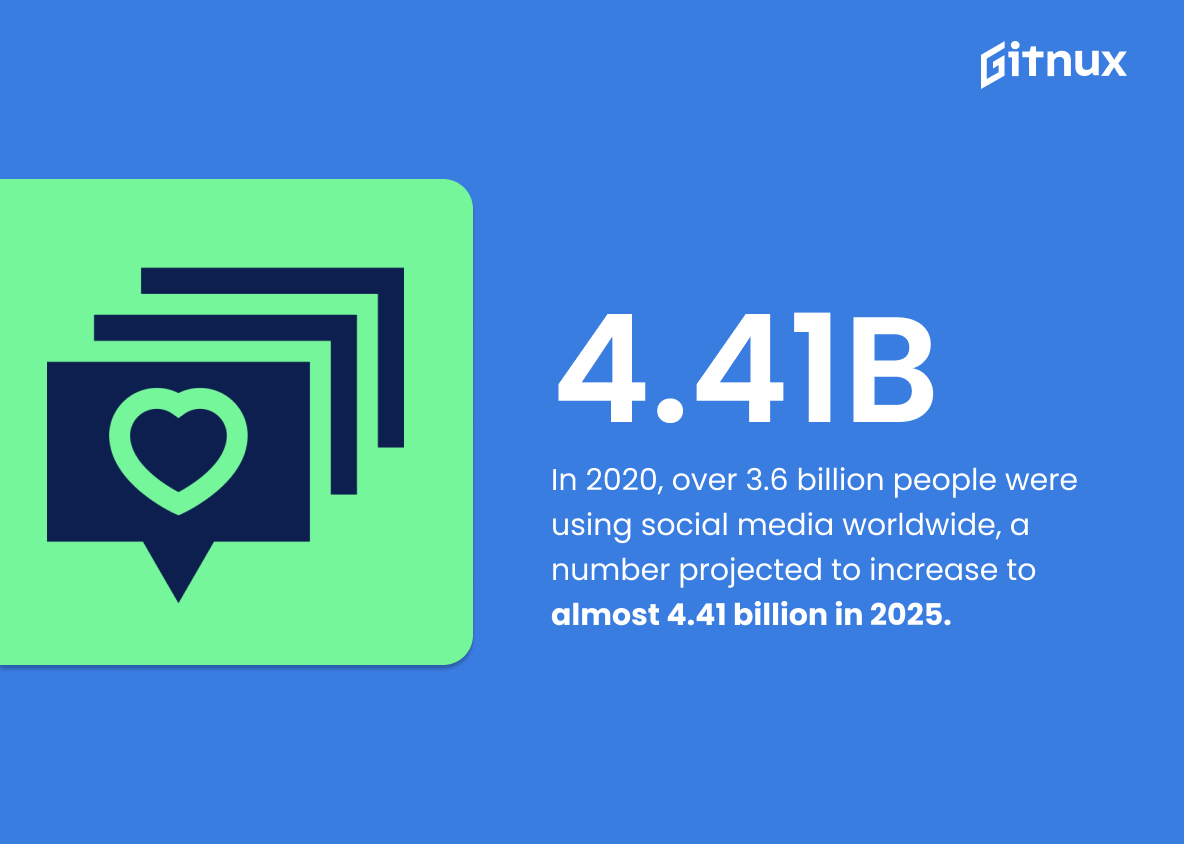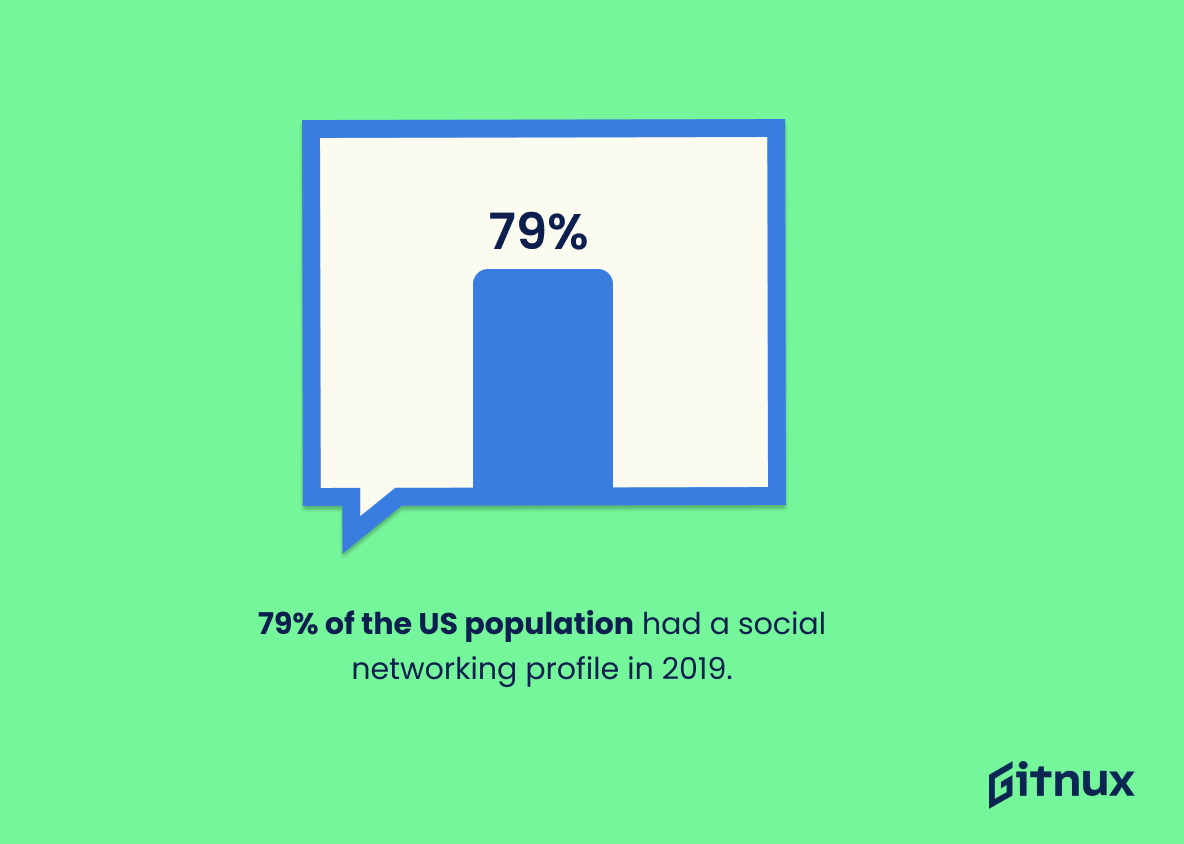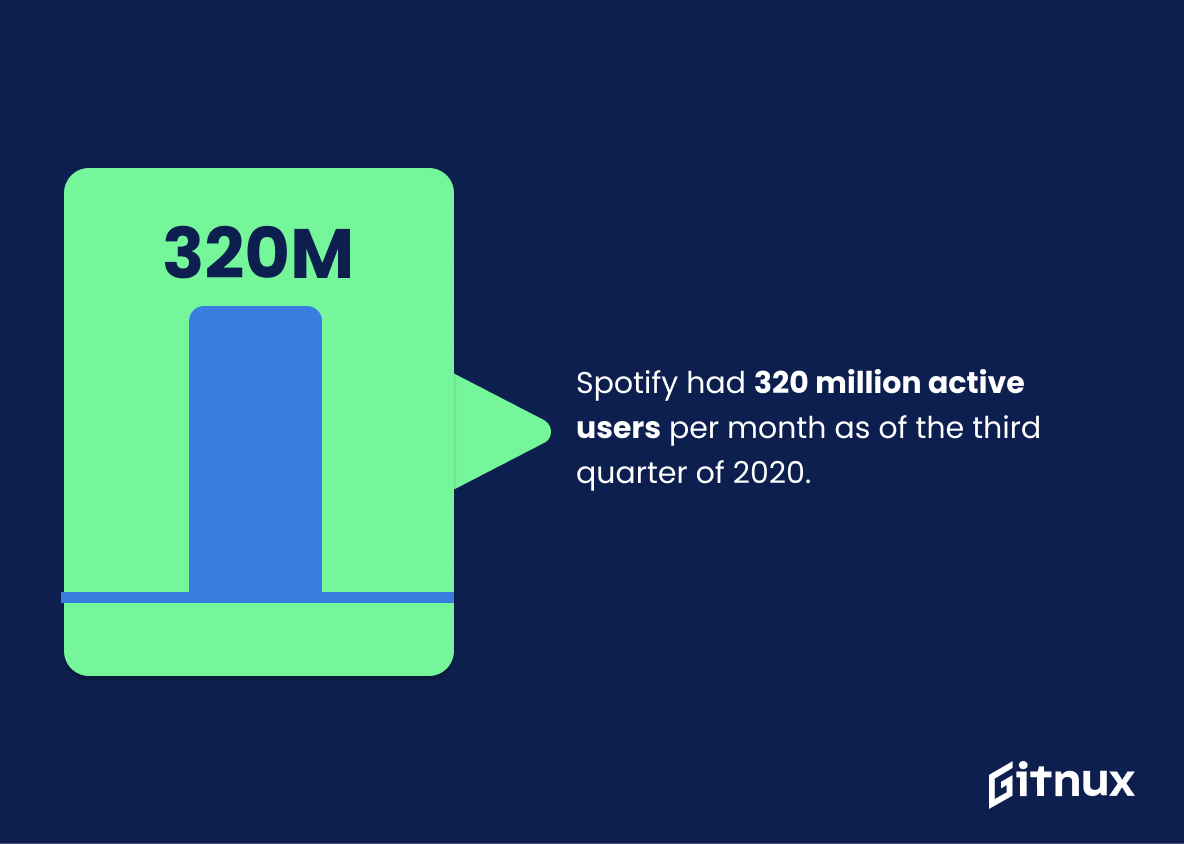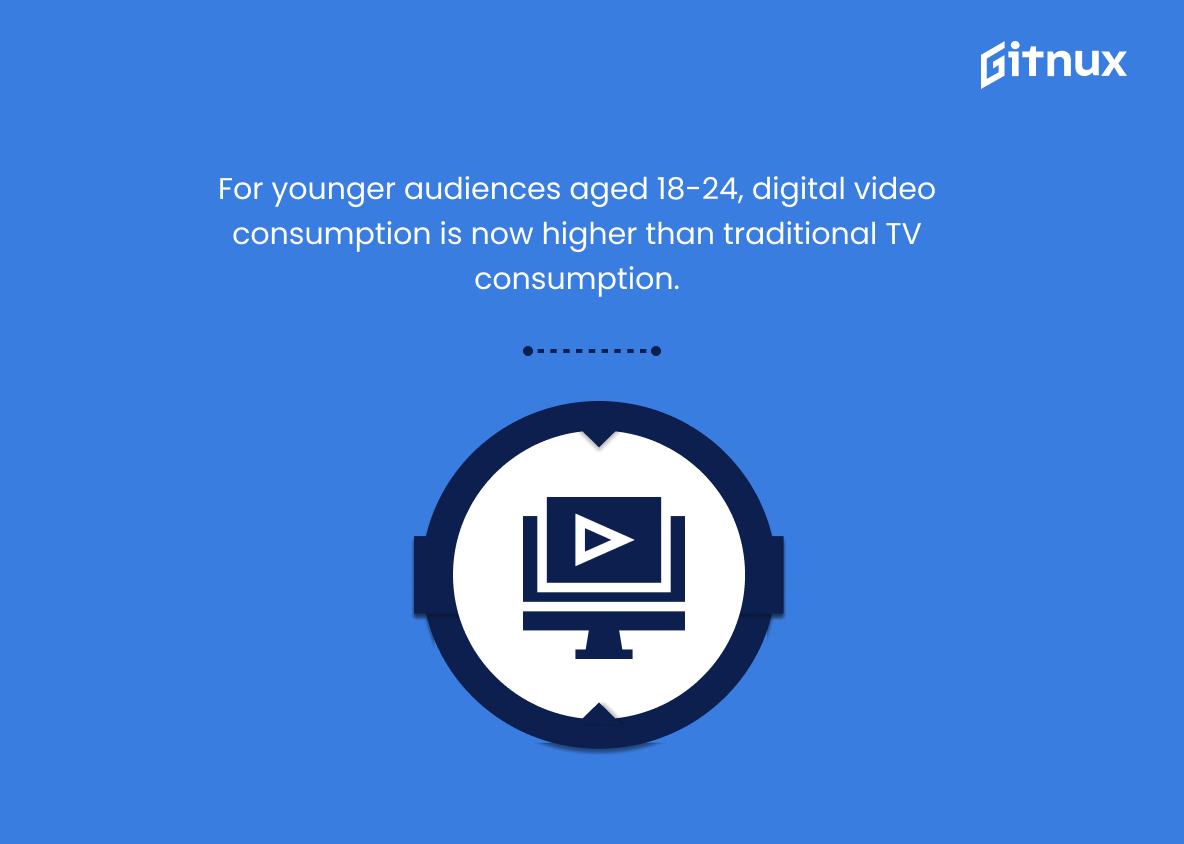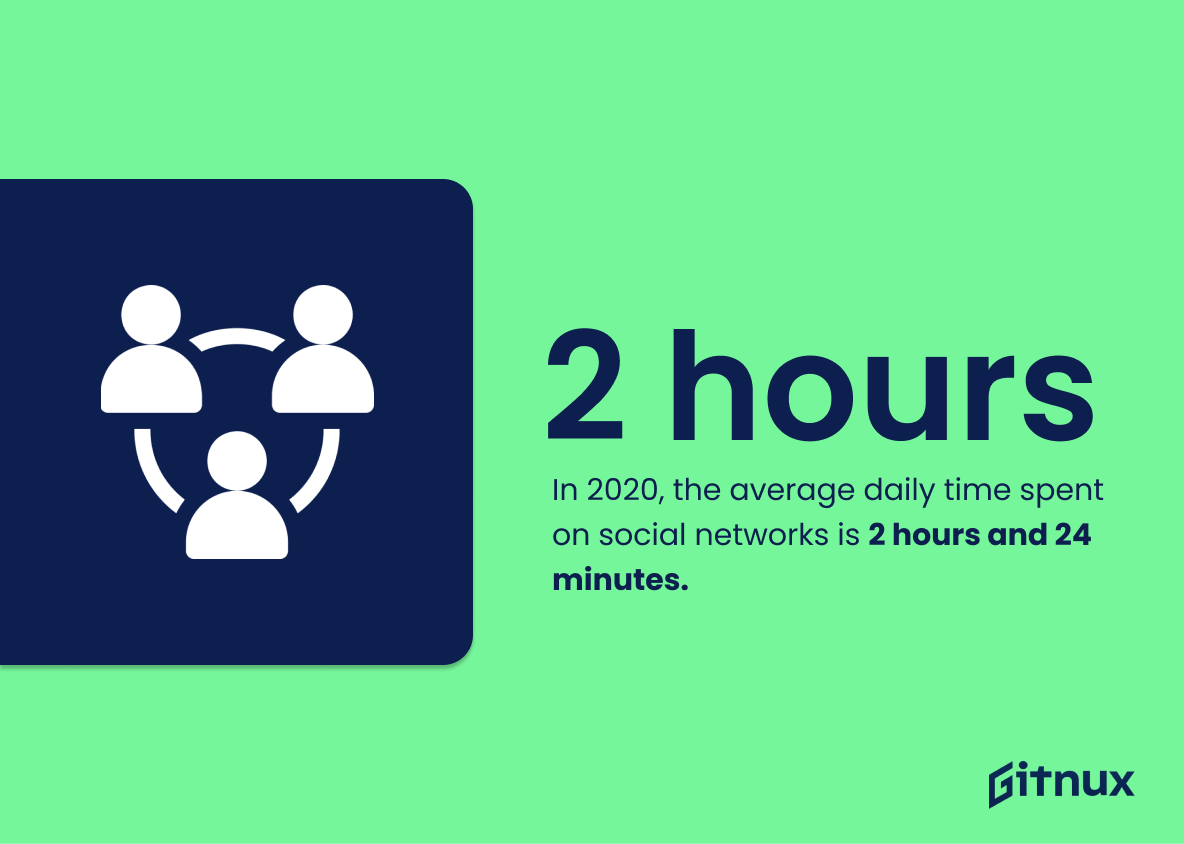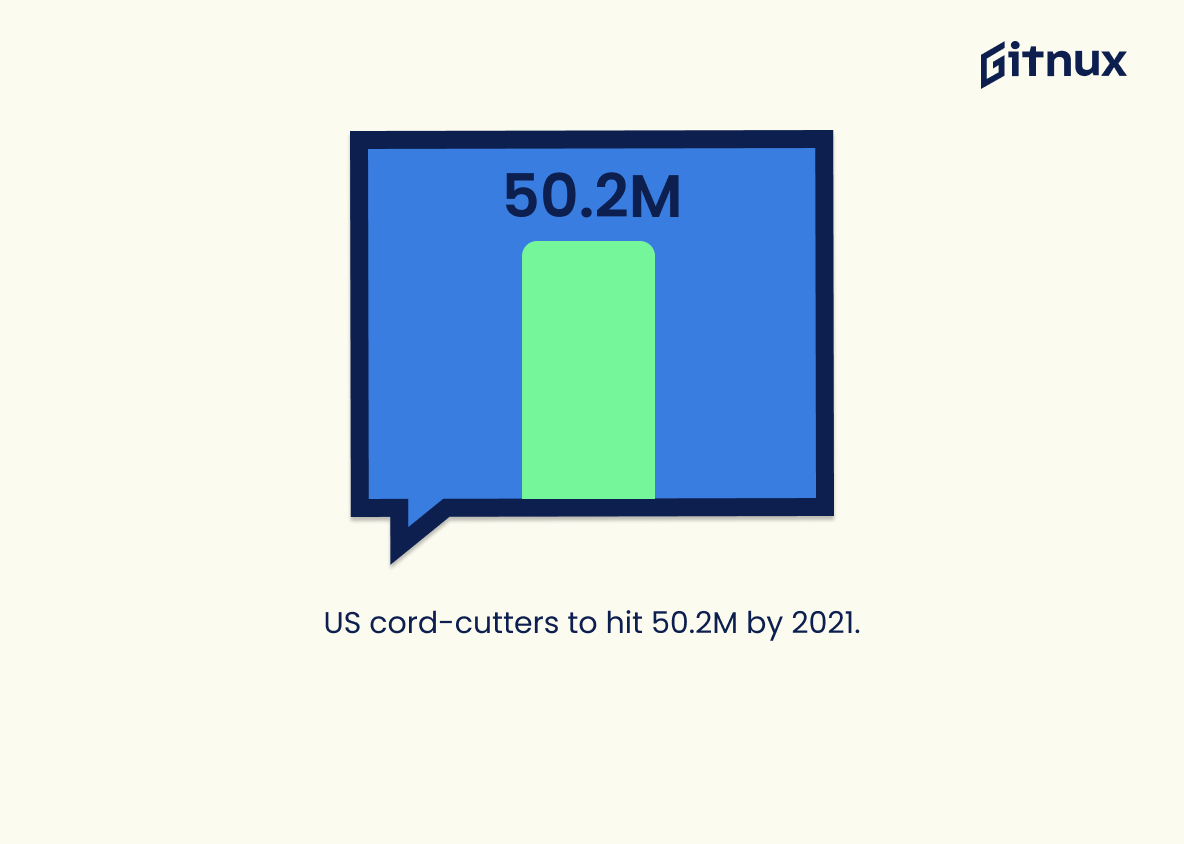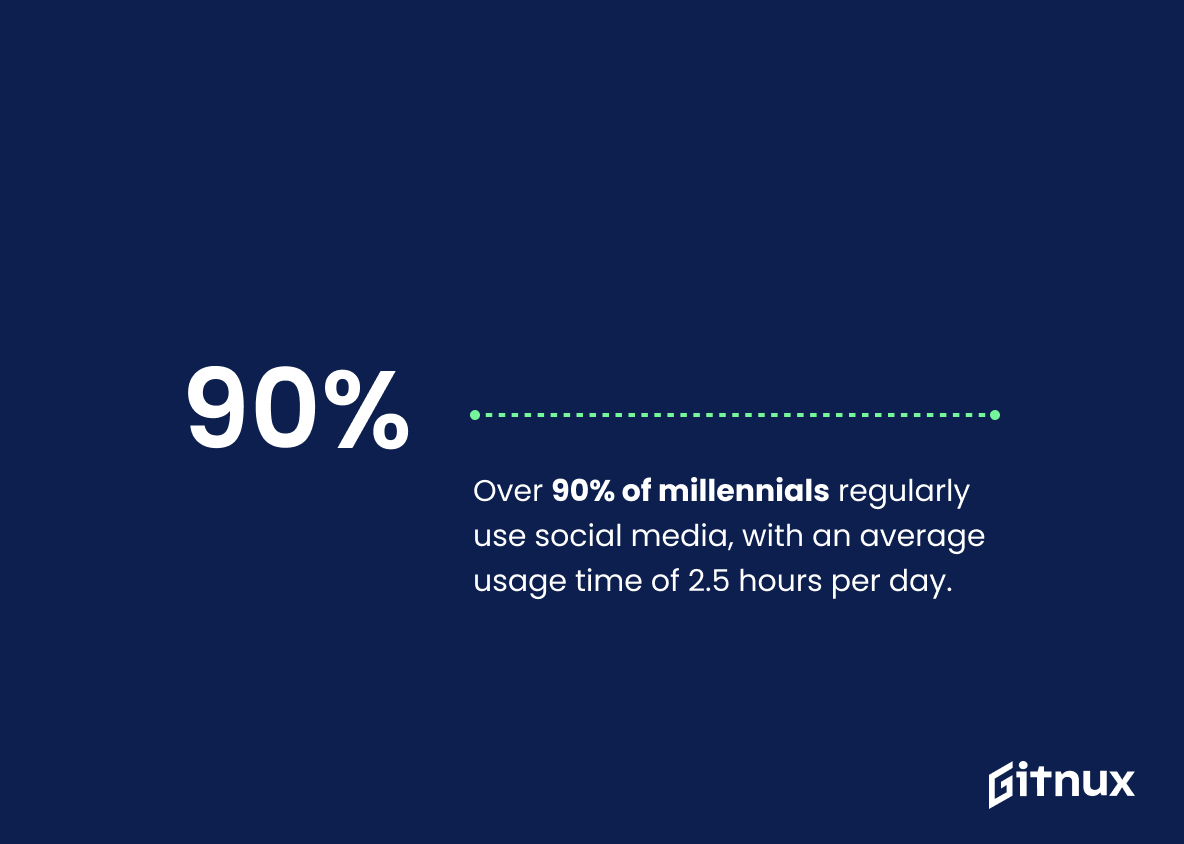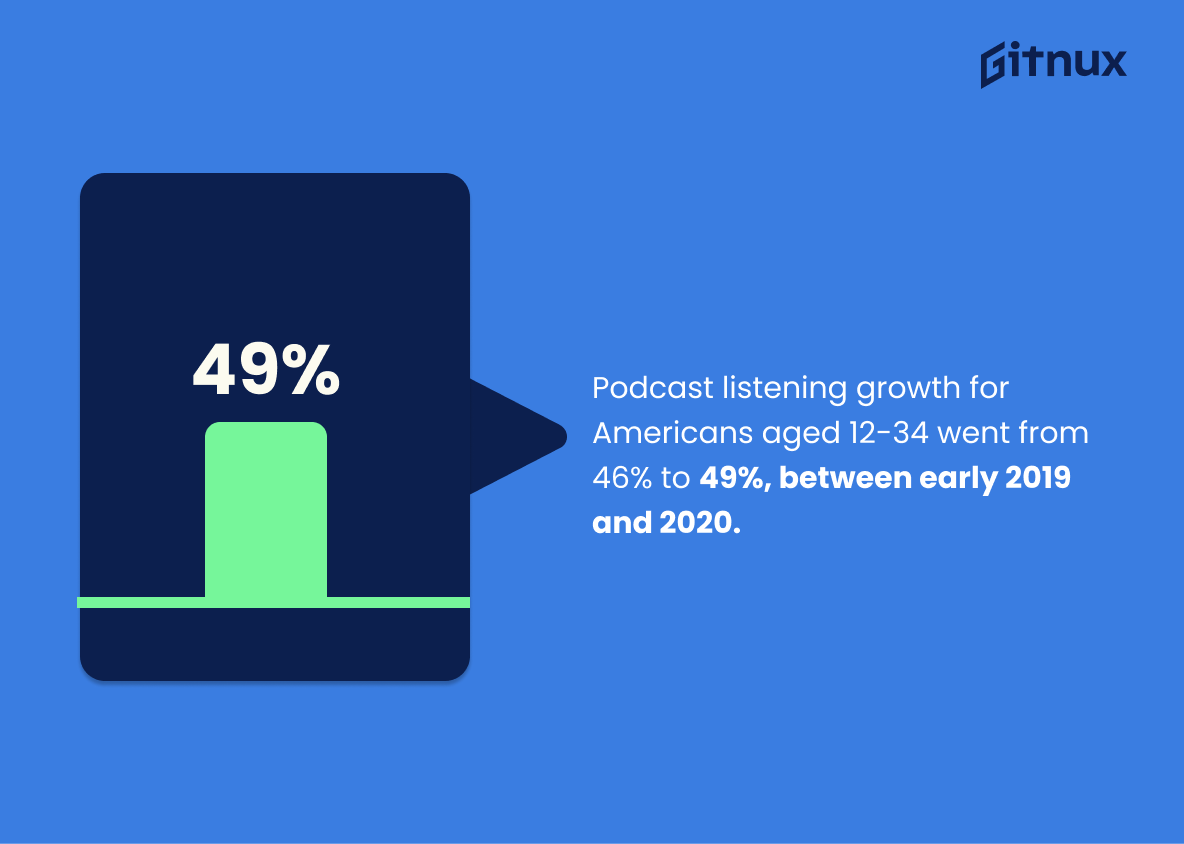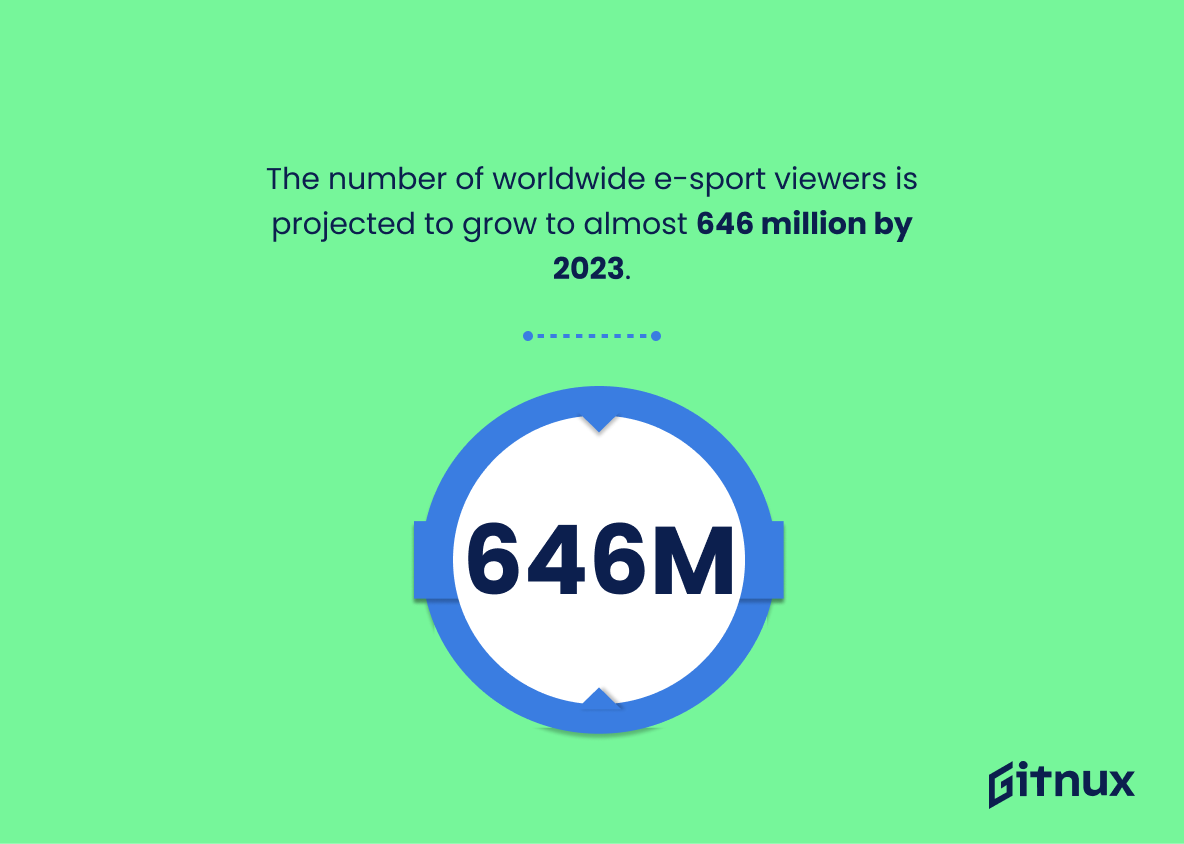In this ever-evolving digital era, we realize how profoundly technologies have influenced our media consumption habits. Whether it’s streaming a favorite show on Netflix, or scrolling through social platforms like Instagram, our lives are entwined with digital media in various ways. Today’s blog post aims to shed light on the extensive realm of digital media consumption statistics. We will delve into enlightening facts and figures, understanding the current trends, demographic preferences, global differences, and the potential future of media consumption. So whether you’re a marketer eyeing to optimize your promotional strategies or a tech enthusiast curious about the fast-paced digital world, this comprehensive guide will provide key insights relevant to you.
The Latest Digital Media Consumption Statistics Unveiled
On average, the global online population spent 6.21 hours per day accessing the internet from any kind of device in 2019.
Drawing our attention towards the fascinating revelation of the digital realm – an average of 6.21 hours per day was spent by the global online population in 2019 accessing the internet from various devices. This figure elegantly denotes the immersion of digital media in our lives. In a blog post about Digital Media Consumption Statistics, this fact becomes a cornerstone.
It unveils the profound influences of the internet on our daily routines, highlighting the expanse of opportunities lying ahead for digital content creators and marketers. It nudges us towards refreshing insights around user behavior, online patterns, peak engagement hours, preferred devices and changing digital consumption trends. What’s more, it underscores the enormity of the audience that bloggers can potentially reach and engages, making it an invaluable piece of information when crafting digital content or marketing strategies. No wonder digital media has become the new agora of modern life.
By 2022, 82% of all internet traffic will come from video streaming and downloads.
Forecasting a striking dominance of video streaming and downloads in all internet traffic, the statistic injects a potent dose of reality into the digital media landscape. As we cross the threshold towards 2022, the data highlights a revolutionary shift to visuals, commanding an unquestionable 82% chunk of the Internet traffic. It’s like attempting to capture a stellar explosion within the confines of your grasp. Imagine the magnitude and pulsating energy of that activity.
In the context of a blog post about Digital Media Consumption Statistics, it signifies both a challenge and opportunity. Where written content used to reign supreme, it seems as though we are entering the era of ‘show and tell’. This immense surge in visual content consumption places video creators, marketers, and innovators at the forefront of the digital media game. As the tide turns, it prompts an intriguing question: Are you ready to ride the wave of this video-driven digital revolution?
In 2018, adults in the US spent 3 hours and 48 minutes per day on computers, tablets and smartphones.
Undoubtedly, the colossal chunk of time spent by US adults – an astounding 3 hours and 48 minutes, on computers, tablets and smartphones daily in 2018 articulates a vivid narrative about the gravitational pull of digital media in people’s lives. As you peruse these statistics in the backdrop of a blog post on Digital Media Consumption, it beautifully illuminates the profound and inescapable role digital media plays in the society. The time investment serves as a reflection of the priority and dependence consumers place upon digital media platforms, influencing business strategies, product developments, and marketing trends. The figure adds immense value to the discussion, facilitating the understanding of user behavior, market competition, and even social change influenced by such sizable consumption.
74% of adults in the US reported using YouTube, a digital media platform.
Delving into the realm of digital media consumption statistics, one can’t help but notice the striking influence of YouTube, the dynamic digital media platform. No less than 74% of American grownups admit to frequenting this virtual arena. This number is much more than just a statistic, it paints a vivid picture of contemporary media consumption patterns. Positioned at the forefront of digital media platforms, YouTube’s dominance manifests itself in how it is shaping the media preferences and habits of nearly three-quarters of adults in the US. Therefore, this powerful digital media magnet proves to be a vital topic of interest in a blog post focusing on such statistics. It provides fertile ground for discussions on evolving media tendencies, advertising strategies, and the continuing shift towards digital platforms in our quest for information, entertainment, and connectivity.
As of Q2 2020, Netflix had 193 million paying streaming subscribers worldwide.
In the lively carnival of digital media consumption statistics, Netflix’s whopping 193 million paying streaming subscribers worldwide, as observed in Q2 2020, really takes the center stage. This number is an orchestral accompaniment that hits a crescendo, dramatically illustrating the evolving paradigm of consumer behavior towards digital media. It serves as a barometer reflecting the global appetite for streaming services, a clear indication of the seismic shift from traditional entertainment outlets to online platforms. This illuminating figure, hence, becomes a lodestar, guiding future business strategies, marketing plans, and content development within the digital media landscape. It also gives content creators, advertisers, and investors alike a prism through which they can gauge the profitability and popularity potential of digital streaming platforms. In essence, this single statistic masterfully personifies the story of our increasingly digital world and the place that media streaming services like Netflix hold in it.
In 2020, over 3.6 billion people were using social media worldwide, a number projected to increase to almost 4.41 billion in 2025.
The explosion in the number of global social media users, expected to skyrocket from 3.6 billion in 2020 to a staggering 4.41 billion in 2025, throws a revealing light on our evolving digital habits. Viewing this data through the lens of digital media consumption offers an invaluable understanding of anticipated trends and behaviors, making it an integral part of discourses on related strategies. Particularly for those orchestrating a blog post on Digital Media Consumption Statistics, this statistic dramatically illustrates the rising tide of social media as an influential force, given its ever-increasing user base. Such an expected surge underscores a golden opportunity for enterprises in the digital space to tap into this trend, gearing their strategies to cater to this bustling, ever-expanding virtual populace. This highlights social media’s potential as a thriving platform for content creation, diverse audience engagement, and innovative marketing and advertising potential.
79% of the US population had a social networking profile in 2019.
Our relation with the digital world is getting closer, and an intriguing manifestation of this intimacy is the statistic stating that, in 2019, a whopping 79% of the U.S population flaunted a social networking profile. This highlights the enormous role of digital channels in our lives and gives the blog post about Digital Media Consumption Statistics a meaningful layer. This figure is a clarion call for businesses, marketers, and strategists, validating the urgency to tap into the realm of social media. It helps them understand consumer behavior, preferences, interaction patterns, and trends to align their plans accordingly. Moreover, it punctuates the narrative about our evolving relationship with technology, creating a progressive dialogue about digital media’s influence in shaping societal norms, communication, and information dissemination.
Digital media represent 1/3 of the average US adult’s day.
As we journey into the realm of digital media consumption statistics, it’s staggering to unravel that a solid chunk, precisely one third of an average U.S. adult’s day, is pledged to scrupulously engaging with digital media. This compelling measurement cradles a deep-seated significance. To begin with, it furnishes a mirror into how intricately woven digital media has become in our daily existence, touching every facet, from news to connections, learning to leisure. Thus, it also uncovers the vast potential that digital media holds, beckoning businesses, advertisers, and content producers to tap into this fertile ground. Furthermore, as a beacon enlightening the magnitude of digital influence, this statistic also raises imperative questions about balancing our digital and non-digital life, and fostering healthy media consumption habits.
Spotify had 320 million active users per month as of the third quarter of 2020.
Highlighting the striking number of Spotify’s monthly active users propels the narrative on the massive role digital audio platforms play in the global consumption of digital media. As the digital world continuously evolves, this hefty statistic vividly illustrates the shifting patterns of content intake, wherein more individuals are favoring music streaming and online listening experiences over traditional forms. The impressive figure, representing nearly 5% of the global population, also brings to light a burgeoning digital culture that has seamlessly woven platforms like Spotify into the daily routines of millions. In such a landscape, digital marketers, advertisers, content creators, and similar professionals must be cognizant of these trends to effectively craft messages and strategies that resonate with an increasingly digital-savvy audience.
For younger audiences aged 18-24, digital video consumption is now higher than traditional TV consumption.
Indeed, the finding that digital video consumption trumps traditional TV viewing among the 18-24 age bracket puts a vibrant spotlight on the seismic shift in media consumption habits. This intriguing piece of data acts as a beacon for marketers and digital content creators, underlining the importance of aligning their strategies with the dynamic digital landscape. The statistic resonates loudly, marking a pivotal moment that will likely change the contours of advertising, content creation, and digital strategy. If one hopes to tap into this youthful audience, then embracing digital video platforms has become an inevitably crucial move. In essence, this statistic uncovers a digital revolution on the horizon, where traditional TV may recede into the shadows of our ever-evolving digital world.
In 2020, the average daily time spent on social networks is 2 hours and 24 minutes.
Drawing attention to the average daily time of 2 hours and 24 minutes spent on social networks in 2020 underscores the central role of digital media consumption in modern lifestyles. As social networks compete for a share of the burgeoning digital space, this figure serves as a spotlight, illuminating how deeply entrenched these platforms have become. It’s a numerical testament to the fairly profound transformation in information consumption, where social networks now not only serve as entertainment but also, and more importantly, act as primary sources of news, social interaction, and even business engagements. Hence, this nugget of data sits at the heart of our dialogue surrounding the evolving patterns of digital media consumption.
By 2021, the number of cord-cutters in the US, people shedding their cable and satellite TV, is expected to rise to 50.2 million.
Highlighting this statistic on the increasing numbers of ‘cord-cutters’, or individuals electing to disappear from the conventional television landscape in favor of alternate media platforms, conveys a significant shift in the media consumption patterns across the United States. This not only underscores the declining dominance of traditional cable or satellite TV, but also intimates towards the burgeoning appeal of contemporary digital platforms like streaming services. Delving into digital media consumption trends, such numbers illustrate the growing impetus for companies to reassess their strategies for reaching audiences, and potentially morph their focus to align with this digital media upsurge. Thus, the revelation of a predicted 50.2 million cord-cutters in 2021 provides invaluable insight into the potential future of the media landscape, warranting serious consideration for any individual or company wanting to understand or thrive within this rapidly evolving digital era.
Over 90% of millennials regularly use social media, with an average usage time of 2.5 hours per day.
Delving into the heart of our digital era, the revelation that over 90% of millennials are immersed in social media realms on a regular daily basis, devoting an average of 2.5 hours, presents potent insights. In the context of a digital media consumption blog post, this statistic breathes life into the narrative, painting a vivid picture of the pervasiveness of social media in shaping the millennial digital landscape.
It signifies the millennial’s burgeoning reliance on, and engagement with, digital platforms. This data illuminates the fundamental role of digital channels as not only a means of imbibing information but also as key influencers on purchasing decisions, personal opinions, and lifestyle choices. It echoes the magnitude of digital media opportunities for marketers looking to resonate with this demographic.
Furthermore, it underlines that to captivate this wired generation, traditional marketing strategies need to retreat in favor of more innovative, tech-savvy approaches. Essentially, it is stating that if you want to catch the millennial fish, you must cast your digital net into the social media sea. This is a mission critical pointer for businesses, advertisers, policymakers, and anyone seeking to optimize the way they reach this audience. It truly brings into focus the age we live in – where digital reigns supreme – a factor that cannot be underemphasized in a discourse concerning Digital Media Consumption Statistics.
Podcast listening growth for Americans aged 12-34 went from 46% to 49%, between early 2019 and 2020.
Dive into the heartbeat of these fascinating percentages. Amid the clutter of the digital media landscape, it’s easy to miss subtle shifts such as the swell in podcast engagement among Americans aged 12-34, from 46% in early 2019 to 49% in 2020. This seemingly modest upward tick is not just a numerical increment; it weaves a broader tale of changing consumer behaviors and speaks volumes about the growing appeal of auditory content among young America. It signals that consumers are increasingly navigating towards more intimate, conversational forms of media that listen to them as much they listen, further intensifying the audio revolution. For marketers, advertisers, and content creators, this is a clear call to reevaluate and recalibrate their strategies, and seize the sonic potential of podcasts in digital media’s new world order.
The number of worldwide e-sport viewers is projected to grow to almost 646 million by 2023.
Forecasting an upwards surge to nearly 646 million e-sport viewers globally by 2023 underscores the exponential growth digital media is experiencing and its mounting influence on our consumption habits. This projected figure embodies the shifting landscape from traditional to digital platforms, as audiences find appeal in live, interactive, and engaging online content. Integrating this statistic into a blog post about Digital Media Consumption Statistics presents a compelling narrative of the trajectory and potential of digital media. It could signal to marketers, businesses, and content creators the lucrative opportunities lying ahead in e-sports, encouraging them to be early adopters in this rapidly growing space. Thus, this statistic has the power not only to inform but shape the future perspectives and strategies of those operating in the digital media world.
Conclusion
As the digital media landscape continues to evolve, understanding consumption statistics is vital. These metrics provide insightful information about user behaviors, preferred devices, and trending content. It is evident from the data discussed in this blog post that digital consumption is rising exponentially, with mobile devices being at the forefront. Therefore, businesses must adapt their strategies in line with these statistics in order to reach and engage their target audience effectively. The future of digital media is poised to be shaped by these trends, and staying ahead of them will undoubtedly offer a competitive advantage in the world immersed in digital media consumption.
References
0. – https://www.www.pewresearch.org
1. – https://www.www.nytimes.com
2. – https://www.www.cisco.com
3. – https://www.www.digitalinformationworld.com
4. – https://www.www.businessofapps.com
5. – https://www.blog.globalwebindex.com
6. – https://www.www.statista.com
7. – https://www.variety.com
8. – https://www.www.emarketer.com
